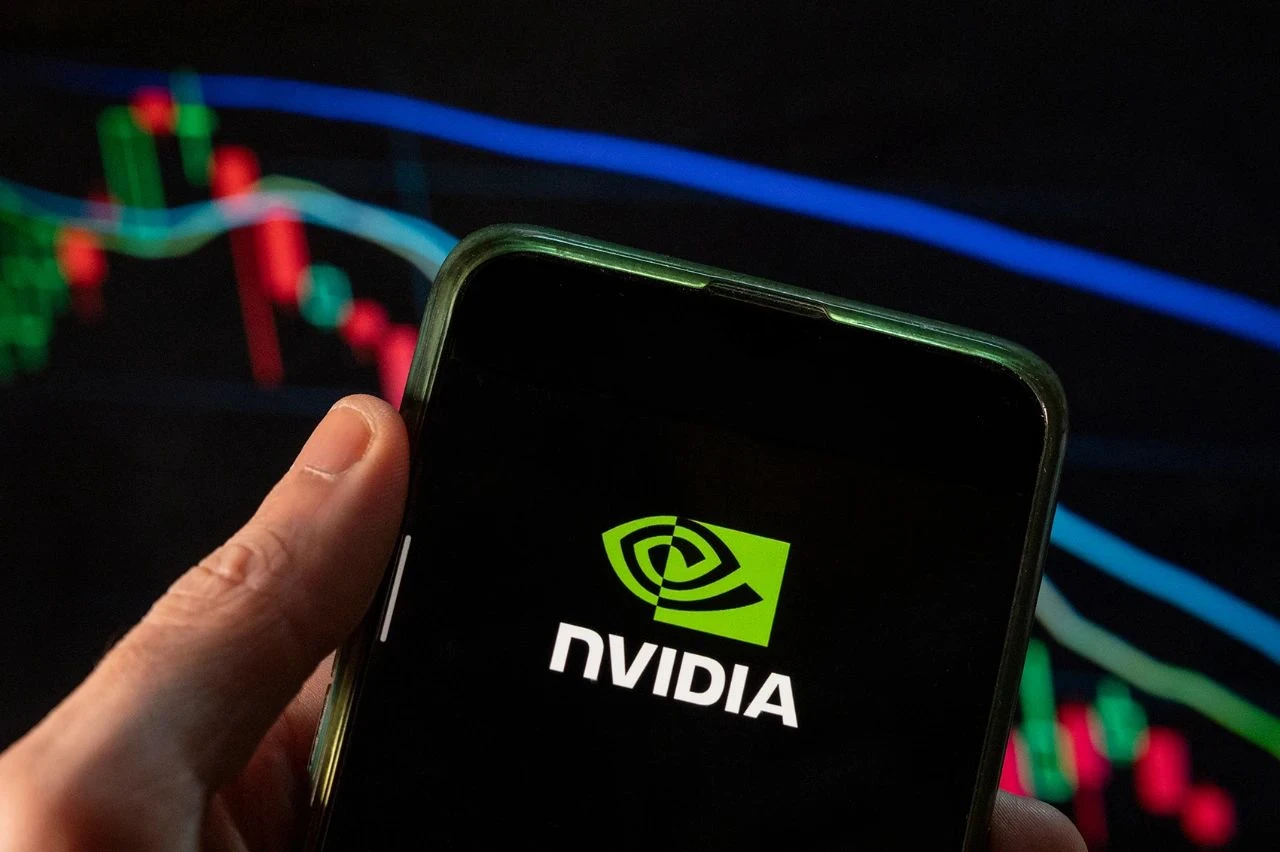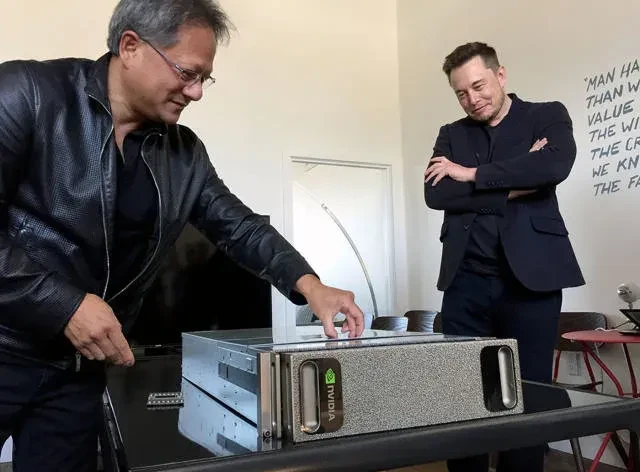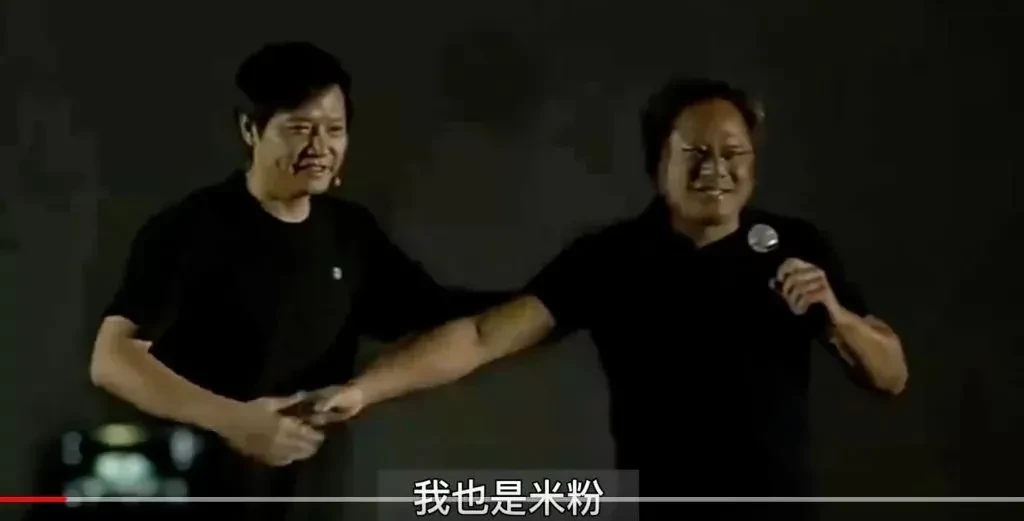
On June 6th, NVIDIA's stock price rose by 5.2%, surpassing a market value of over 3 trillion USD, overtaking Apple to become the world's second-largest company by market value.
Since its IPO at $0.41 in 1999 to the current $1224.40, NVIDIA has created nearly 3000 times in returns over the past 24 years.
The most enviable aspect of NVIDIA is its "unrestricted by cycles," continuously "taxing" as the underlying infrastructure, indispensable regardless of the industry.
As the creator of GPUs, NVIDIA seized the opportunity of the "PC wave," entering countless households alongside the explosion of the gaming market.
Subsequently, during a downturn in the gaming business, the cryptocurrency bull market arrived, and NVIDIA's graphics cards were widely used for "mining" cryptocurrencies such as Ethereum, quietly amassing wealth.
Following that, the rise of the smart car industry led to the rapid development of its in-vehicle chip business. Finally, ChatGPT emerged, transforming NVIDIA into an AI arms dealer.
However, looking back at NVIDIA's history of growth, it has also teetered on the brink of failure and bankruptcy time and time again. Huang Renxun once exclaimed, "My desire to live exceeds the will of almost everyone who wants to kill me."
NVIDIA, the Creator of GPUs
The birth of graphics cards (GPUs) dates back to the 1990s.
At that time, some people in Silicon Valley proposed an idea: to alleviate the workload of the central processing unit (CPU) by using specialized chips for specific functions such as sound cards for processing sound and network cards for processing networks. Similarly, it was a natural progression to manufacture a chip specifically for computer image output, which is the graphics card (Graphic Card). For example, Sony's game console PlayStation, released at the end of 1994, used a graphics card to process images.
However, there were many technological paths for graphics cards at the time. NVIDIA's breakthrough was to achieve 3D graphics acceleration through parallel computing, especially in the field of gaming. Parallel computing involves breaking down a complex task into multiple smaller tasks and processing them simultaneously to improve computational efficiency.
In 1999, NVIDIA launched a graphics card called GeForce. This graphics card was designed specifically for gaming, emphasizing "parallel computing," significantly enhancing 3D graphics processing capabilities to provide a smoother and more realistic gaming experience.
The success of GeForce propelled NVIDIA to rapid prominence, making it a leader in the graphics card industry.
At that time, NVIDIA was not the only one researching graphics processing units, but NVIDIA successfully deeply associated itself with the label of "GPU inventor."
NVIDIA's then marketing director, Dan Vivoli, promoted the company's chips using the concept of "graphics processing unit" (GPU). He believed that by repeatedly emphasizing NVIDIA as the inventor of the GPU, NVIDIA could become an industry leader.
Subsequently, NVIDIA indeed became synonymous with GPUs, opening up a new path for itself by marketing GPUs.
NVIDIA, Beneficiary of the Cryptocurrency Bull Market
NVIDIA's market value soared from $14 billion in 2016 to a peak of $175 billion in 2018, perhaps largely due to the cryptocurrency mining frenzy.
In 2017, the cryptocurrency market experienced a bull run, attracting a large number of miners to snatch up GPUs, turning GPUs into money-making machines. Global graphics card sales sharply increased, and prices soared.
For example, the NVIDIA GTX 1060 model, used by miners, was priced at around 1650 yuan per unit before May 2017, but rose to around 2900 yuan per unit after June 2017.
NVIDIA became a big winner behind the cryptocurrency bull market, reaping a windfall.
Benefiting from the cryptocurrency mining frenzy, NVIDIA achieved a record-high annual revenue of $9.7 billion in the 2018 fiscal year. Huang Renxun stated, "Our GPUs support the world's largest distributed supercomputing, which is why they are so popular in the cryptocurrency field." In addition, NVIDIA also launched specialized mining cards such as the GTX 1060 3GB, P106, and P104.
In 2020, after a bear market in the previous two years, the cryptocurrency market took off again, with Bitcoin rising by more than 2 times and Ethereum rising by 4 times, once again making NVIDIA a beneficiary of the "cryptocurrency boom."
Responding to the cryptocurrency market, NVIDIA actively participated in the mining market, launching the CMP series of professional mining cards, which removed graphics processing functions and had lower core peak voltage and frequency to improve mining performance and efficiency.
At the end of 2020, NVIDIA released the RTX30 series graphics cards. The entry-level RTX3060 was priced at 2499 yuan, while the RTX3090 was priced at 11999 yuan. With the rise of cryptocurrencies, the RTX3060 was sold for as high as 5499 yuan, and the RTX3090 soared to 20,000 yuan. After the first quarter financial report in 2021 was released, NVIDIA's Chief Financial Officer Colette Kress revealed that NVIDIA's sales of cryptocurrency chips reached $155 million, accounting for a quarter of the overall sales volume in the first quarter.
In 2021, NVIDIA achieved a record revenue of $26.91 billion for the full year, a 61% increase from the previous fiscal year, and its market value briefly surpassed $800 billion. However, the good times did not last. In September 2022, Ethereum's execution layer and proof-of-stake consensus layer completed a merge, transitioning the Ethereum blockchain network mechanism from proof-of-work (PoW) to proof-of-stake (PoS), gradually ending the era of GPU mining. This to some extent also affected NVIDIA's development. In the third quarter of 2022, NVIDIA's revenue and net profit both declined, with quarterly revenue at only $5.931 billion, a 17% year-on-year decrease, and net profit at only $680 million, a staggering 72% year-on-year decrease. On November 23, 2022, NVIDIA's stock price was at $165 per share, nearly halving from its peak the previous year. At that time, both overseas media such as "Financial Failures" and domestic technology media were pessimistic about NVIDIA.
In the depths of adversity, a turnaround occurred as the winds of AI and large models began to blow, propelling NVIDIA back into the spotlight.
NVIDIA, AI Arms Dealer
In March 2016, AlphaGo defeated Lee Sedol, shocking the world and sparking a hot discussion about AI.
A month later, Huang Renxun officially announced at the GTC China conference that NVIDIA was no longer a semiconductor company but an artificial intelligence computing company.
In August 2016, a historic moment occurred when NVIDIA donated its first AI supercomputer, the DGX-1, to the newly established OpenAI. Huang Renxun personally delivered the computer to OpenAI's office, and the then-chairman, Elon Musk, used a box cutter to open the package.
Huang Renxun left a remark: "For the future of computing and humanity, I donated the world's first DGX-1."


Subsequently, OpenAI trained the globally popular ChatGPT using NVIDIA's supercomputer, and NVIDIA's subsequent hardware product, DGX H100, was in high demand, with supply unable to meet demand. Rome was not built in a day, and NVIDIA's dominant position in the AI industry began with earlier accumulations. NVIDIA's former chief scientist, David Kirk, had long dreamed of making the 3D graphics rendering power of GPUs universal, not limited to the gaming field. Under the leadership of David Kirk and Huang Renxun, NVIDIA launched the revolutionary GPU unified computing platform CUDA in 2007, unleashing massive computing power resources. However, at that time, CUDA did not impress investors at all. Instead, due to the massive investment in building a "supercomputing" system ahead of its time, NVIDIA's profits were significantly reduced, and Wall Street was full of criticism. Ben Gilbert, the host of the popular Silicon Valley podcast "Acquired," commented, "They were not targeting a large market at the time, but rather an obscure corner of academic and scientific computing, and they spent billions of dollars on it." External voices did not affect Huang Renxun, who persisted in investing in CUDA for over a decade, leading NVIDIA to its current position. Huang Renxun viewed computing power as the core. "Whether it's AI, autonomous driving, metaverse, robotics, or cryptocurrency, NVIDIA uses massive computing power to find new opportunities." Computing power, NVIDIA's eternal weapon.
Three Failures
In 2023, Huang Renxun delivered a speech at the graduation ceremony of National Taiwan University, where he shared three stories of failure and imparted the secret of NVIDIA's success to the students.
The first failure, surviving on the brink of bankruptcy.
In 1994, NVIDIA's first client was the Japanese gaming company SEGA, for whom they designed graphics cards for their game console. However, the following year, Microsoft released the Direct3D graphics interface for the Windows platform, which left NVIDIA in a panic as it conflicted with their design. Ultimately, NVIDIA chose to terminate its contract with SEGA and instead develop GPUs for the Windows platform. This was a risky decision because SEGA was their only client, and they abandoned it. NVIDIA's funds could only support them for 6 months, and if they couldn't launch a new product within that time, they would face the risk of bankruptcy. Fortunately, as their funds were about to run out, just one month away from bankruptcy, NVIDIA designed the Riva 128 chip and achieved success. By the end of 1997, the shipment volume of Riva 128 exceeded 1 million units, allowing NVIDIA to survive.
The second failure, sacrificing short-term profits for future greatness.
In 2007, NVIDIA launched the CUDA GPU acceleration computing program, with the vision of making CUDA a programming model that could enhance various applications from scientific computing and physical simulation to image processing. Creating a new computing model was extremely difficult, as the CPU computing model had been the industry standard for 60 years since the launch of the IBM System 360. CUDA required developers to rewrite applications to showcase the benefits of GPUs. However, to develop such programs, there needed to be a large user base and a significant demand to drive developers to do so. To address the "chicken or egg" problem, NVIDIA used their large user base of GForce gaming graphics cards to build a user base. However, the additional cost of CUDA was very high, leading to a significant decline in NVIDIA's profits over the years, and their market value fluctuated around $1 billion. NVIDIA's years of underperformance also made shareholders skeptical of CUDA. Shareholders preferred the company to focus on improving profitability, but NVIDIA persisted, believing that the time for accelerated computing would come. Huang Renxun founded a conference called GTC and tirelessly promoted CUDA globally. Eventually, applications emerged, including CT reconstruction, molecular dynamics, particle physics, fluid dynamics, and image processing. It wasn't until 2012 that AI researchers discovered the potential of CUDA. Renowned AI expert Alex Krizhevsky trained AlexNet on the GForce GTX 580, triggering the AI explosion.
The third failure, NVIDIA's exit from the mobile chip market.
Do you remember when Lei Jun and Huang Renxun appeared on the same stage?
 In 2013, at Lei Jun's invitation, Huang Renxun attended the launch event of Xiaomi 3.
Huang Renxun, who had gone to the United States at a young age, was asked by Lei Jun to speak in Chinese. He didn't speak fluently, but confidently shouted in Chinese, "NVIDIA's GPU is the best in the world."
At that time, the flagship version of Xiaomi 3 was equipped with the mobile version of NVIDIA's Tegra4 processor, which was also the series' swan song.
At that time, the mobile phone market was booming, and NVIDIA also entered the mobile chip market. Although the entire mobile phone market was very large, NVIDIA could have fought for market share, but they made a difficult decision: to give up this market.
Huang Renxun stated that NVIDIA's mission was to build computers that could do what ordinary computers couldn't, and they should focus on realizing this vision and making unique contributions. NVIDIA's strategic retreat paid off.
In 2013, at Lei Jun's invitation, Huang Renxun attended the launch event of Xiaomi 3.
Huang Renxun, who had gone to the United States at a young age, was asked by Lei Jun to speak in Chinese. He didn't speak fluently, but confidently shouted in Chinese, "NVIDIA's GPU is the best in the world."
At that time, the flagship version of Xiaomi 3 was equipped with the mobile version of NVIDIA's Tegra4 processor, which was also the series' swan song.
At that time, the mobile phone market was booming, and NVIDIA also entered the mobile chip market. Although the entire mobile phone market was very large, NVIDIA could have fought for market share, but they made a difficult decision: to give up this market.
Huang Renxun stated that NVIDIA's mission was to build computers that could do what ordinary computers couldn't, and they should focus on realizing this vision and making unique contributions. NVIDIA's strategic retreat paid off.
Life Advice: Endure hardship and lower expectations
In 2024, Huang Renxun returned to his alma mater, Stanford University, and gave a speech at the business school, sharing some life experiences. When the host asked Huang Renxun if he had any advice for Stanford students about success, he replied, "I hope you have the opportunity to experience a lot of pain and suffering." He mentioned that one of his biggest advantages was "my expectations are very low." Huang Renxun stated that most Stanford graduates have very high expectations of themselves, and they absolutely deserve to have high expectations because they come from one of the best universities on Earth, surrounded by equally incredible peers. "People who have very high expectations of themselves often have low resilience," Huang Renxun said. "Unfortunately, resilience is crucial for success." Huang Renxun emphasized, "Success does not come from intelligence, but from character, and character is shaped by enduring hardship."
免责声明:本文章仅代表作者个人观点,不代表本平台的立场和观点。本文章仅供信息分享,不构成对任何人的任何投资建议。用户与作者之间的任何争议,与本平台无关。如网页中刊载的文章或图片涉及侵权,请提供相关的权利证明和身份证明发送邮件到support@aicoin.com,本平台相关工作人员将会进行核查。




